Baba Taher’s Mausoleum in Hamedan, Iran
Hamedan, one of Iran’s oldest cities, is known for its rich historical heritage and impressive architecture. For visitors, the city provides a unique blend of ancient history and cultural landmarks, including Baba Taher's mausoleum.
This serene site, surrounded by gardens and marked by an elegant tower, attracts those interested in both spiritual reflection and architectural beauty. Whether you're a lover of Persian poetry or simply intrigued by Iran's historical sites, Tomb of Baba Taher offers a tranquil experience, providing insight into the life and legacy of one of Persia’s most cherished poets.
If you're exploring Hamedan tourist attractions for your next visit, you should include this mausoleum in your visit-list.
Who Was Baba Taher?
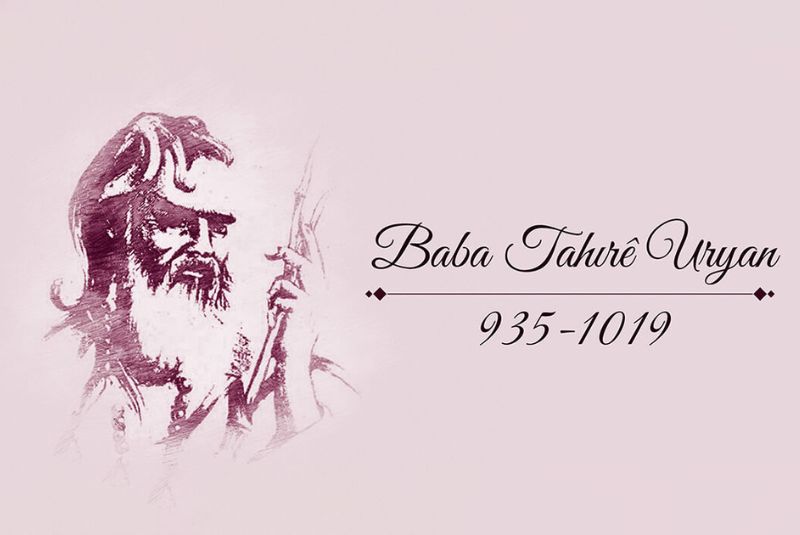
Baba Taher, born in the 11th century, is one of Iran’s most cherished mystical poets, known for his soulful and poignant verses. Although much about his early life remains unclear, it is believed that he lived in Hamedan, where he became a wandering dervish. His deep connection to Sufism and spirituality shaped his poetry, which often reflects themes of love, divine yearning, and human suffering. Baba Taher’s quatrains, known as "do-bayti", are celebrated for their simplicity and emotional intensity. Written in the local dialect of the time, his verses offer a raw and intimate glimpse into the poet's spiritual journey and personal struggles.
The impact of Baba Taher’s poetry extends far beyond his lifetime. He remains a towering figure in Persian literature, admired for his ability to convey profound emotions in just a few lines. His "do-bayti" continues to be studied, recited, and admired, resonating with those seeking spiritual wisdom and emotional depth. Many Iranians still turn to his poetry for solace and reflection, reinforcing his enduring influence on Persian culture.
Baba Taher spent much of his life in Hamedan, a city that has honored his memory by constructing a beautiful mausoleum in his name. His burial site there has become a symbol of his lasting connection to the city, where visitors come to pay homage to the poet and experience the serene surroundings of his final resting place.
| Read more: Attar of Nishapur - The Sufi Poet and Philosopher
The Architecture of Baba Taher’s Mausoleum
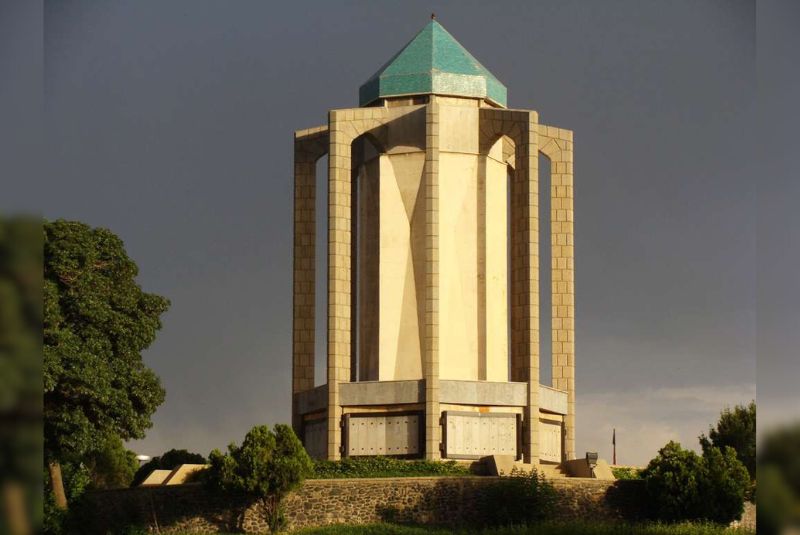
Tomb of Baba Taher, located in Hamedan, was reconstructed in the mid-20th century to honor the legacy of the famed poet. The original tomb had fallen into disrepair, and in 1970, a new design was implemented to restore the site, blending traditional Persian aesthetics with modern architectural elements. The mausoleum is characterized by its striking two-tiered tower, which rises above an octagonal base, a shape often found in Persian sacred architecture. This combination of forms reflects both the timelessness of Baba Taher’s poetry and the modern efforts to preserve his memory. The structure’s minimalistic design is intended to align with the spiritual and humble nature of the poet’s life and work.
| Suggestion: Elements of Persian Architecture
Materials and Aesthetics

The mausoleum is constructed from white marble, giving it an elegant and serene appearance. The use of turquoise tiles adorning the dome and certain portions of the façade provides a vibrant contrast to the otherwise subdued stonework, evoking a sense of calm and peace. Delicate, intricate stone carvings and calligraphic inscriptions of Baba Taher’s verses are subtly integrated into the structure, adding both beauty and reverence. The overall simplicity of the design mirrors the humility and spiritual essence of Baba Taher’s poetry, creating a space that feels introspective and meditative.
The Surrounding Garden
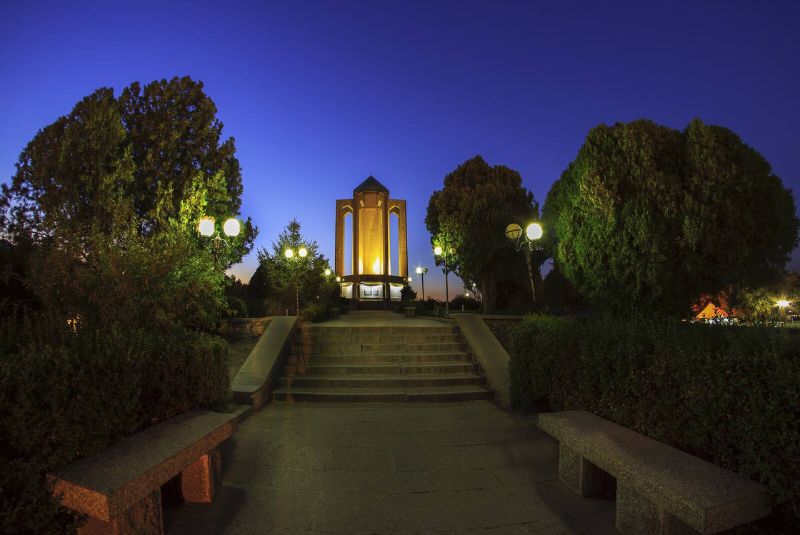
The mausoleum is surrounded by meticulously maintained gardens, with pathways lined by flowers and trees, offering a peaceful atmosphere for visitors. These green spaces invite contemplation, making the site an ideal spot for quiet reflection. Benches are placed throughout the garden, allowing visitors to sit and appreciate the tranquil setting while being enveloped in the natural beauty that enhances the serene environment of Baba Taher’s final resting place.
| Discover: Persian Garden - A Piece of Paradise
Baba Taher’s Mausoleum Location and Accessibility
Tomb of Baba Taher is located in the heart of Hamedan, situated in Baba Taher Square, making it easily accessible from various parts of the city. Visitors can reach the mausoleum by car, taxi, or public transportation, as it lies close to the city’s main roads. Its central location also puts it within a short distance of other important historical sites, such as the Mausoleum of Avicenna and Hegmataneh Hill, making it an ideal stop on a broader exploration of Hamedan’s rich heritage.
Opening Hours and Admission
The mausoleum is generally open to visitors daily from 8:00 AM to 8:00 PM, although it’s always a good idea to check ahead for any seasonal or holiday closures. Entrance fees are modest, typically costing around 20,000 IRR (Iranian Rials) per person. While guided tours are not always available on-site, informational plaques in both Persian and English provide visitors with insights into Baba Taher’s life and the mausoleum’s history, making it easy to appreciate the site without a formal guide.
Best Time to Visit

The best time to visit Baba Taher’s Mausoleum is during spring and autumn, when the weather in Hamedan is pleasant and the surrounding gardens are in full bloom. Summers can be hot, while winters often bring snow, making those seasons less ideal for outdoor exploration.
Visitor Etiquette
As with many cultural and historical landmarks, it’s important to maintain a respectful demeanor when visiting Baba Taher’s Mausoleum. Visitors are encouraged to speak softly, dress modestly, and refrain from disruptive behavior out of respect for the site’s spiritual and historical significance.
| Read more: Dress Code in Iran
Nearby Attractions in Hamedan
After visiting Baba Taher’s Mausoleum, tourists can explore many other remarkable attractions in Hamedan, making it a well-rounded destination for history enthusiasts and casual travelers alike. From ancient inscriptions to bustling bazaars, Hamedan offers a glimpse into Iran's rich past and vibrant culture.
Ganjnameh Inscriptions and Waterfall
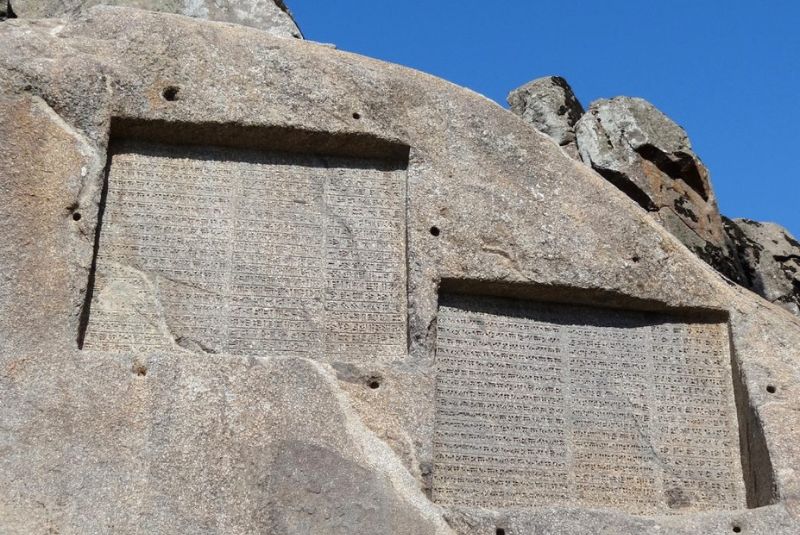
The Ganjnameh Inscriptions, carved into the rocks near Hamedan, date back to the Achaemenid Empire, commissioned by Darius the Great and Xerxes. These inscriptions, written in Old Persian and Elamite, provide valuable insights into the history of ancient Persia.
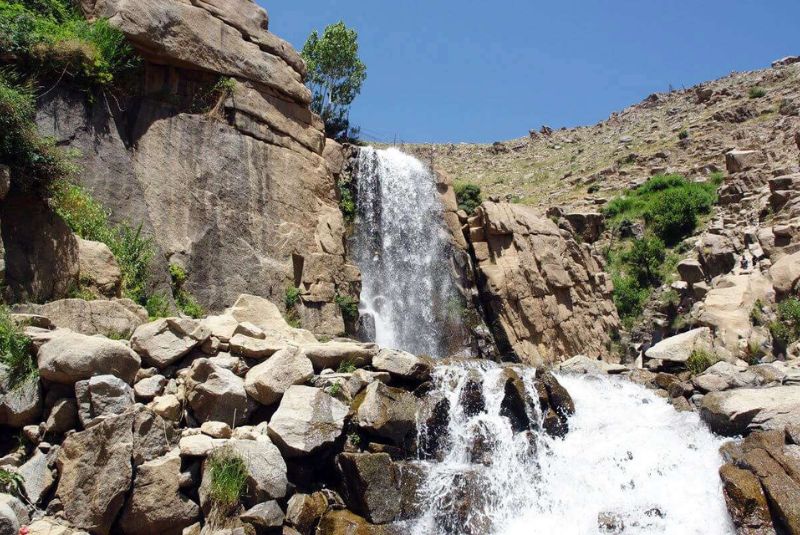
Located just 5 kilometers from the city, the site also features a picturesque waterfall, offering visitors a scenic retreat. The combination of history and natural beauty makes Ganjnameh a must-visit for anyone exploring Hamedan.
Avicenna’s Mausoleum

Just a short distance from Baba Taher’s Mausoleum lies the Mausoleum of Avicenna, another prominent figure in Persian history. Known as one of the greatest physicians and philosophers of the Islamic Golden Age, Avicenna’s contributions to medicine are celebrated worldwide. His mausoleum, built in a modern style, also houses a museum showcasing his works and artifacts. Visitors can learn about Avicenna’s impact on science and philosophy while admiring the sleek architecture of the monument.
Hegmataneh Hill (Ecbatana)

Hegmataneh Hill, the site of ancient Ecbatana, was once the capital of the Median Empire and later an important city during the Achaemenid era. This archaeological site reveals the foundations of one of the oldest civilizations in Iran. Visitors can explore the ruins and view artifacts that bring the city's rich history to life, with nearby museums offering additional context and exhibitions.
Alavian Dome

The Alavian Dome is an architectural gem from the Seljuk era, known for its intricate stucco work and geometric designs. The monument serves as the burial site for a noble family and is a fine example of Persian-Islamic architecture. Its detailed decorations and historical significance make it a highlight for those interested in Islamic art and history.
Hamedan Bazaar

No trip to Hamedan would be complete without a visit to the Hamedan Bazaar, where tourists can immerse themselves in traditional Iranian culture. The bazaar offers a wide variety of handicrafts, spices, textiles, and local delicacies. It’s the perfect place to experience the local way of life and pick up some unique souvenirs.
| Also read about: Ali-Sadr Cave - The Largest Water Cave in the World, in Hamedan
Final Takeaway
Baba Taher’s Mausoleum is a site of great cultural and historical significance, a peaceful place to reflect on the life and work of one of Persia’s most cherished poets. Its architecture, along with its serene surroundings, makes it a meaningful stop in Hamedan. So, make sure to visit this magnificent site when traveling to Iran.
Share your story!
Comment below and let us know about your Experience.
Your story inspires others!


Comment
Leave a Comment